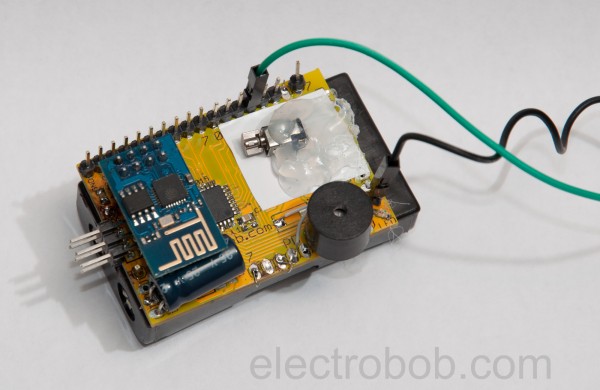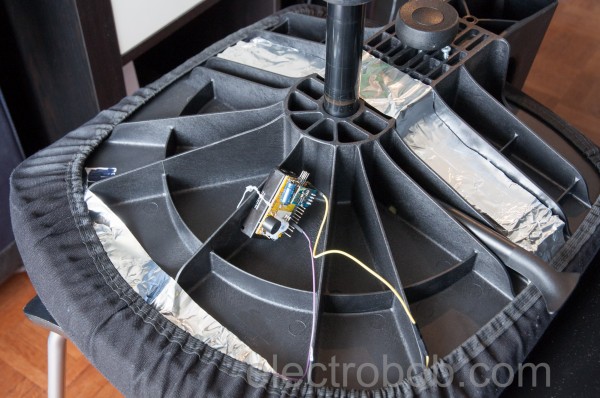With the original capacitive sensor proven to be the best option, it was time to wrap up the project and build the final prototype device and code.
Software wise, a lot of features had to be added, most importantly the ability to alert the user when sitting for too long. The device alerts by vibration every 15 minutes, but once an hour has passed, it becomes more annoying. A web interface is in the works which allow configuration of parameters. Other updated include better calibration, low power modes, vibrator patterns, LED blinks, buzzer sounds, LCD disable and a lot of clean-up.
Hardware wise, the module lost it’s LCD for debugging purposes and gained a vibrator motor, to discretely alert the user if sitting too much. Along with the batteries attached under the PCB, the whole thing is a lot more compact, practically invisible when mounted under a chair. The device is build around a general purpose board I have designed for the microcontroller, the complete schematic is available in the project documentation on GitHub.
 Current measurement shows up at around 25μA while sleeping, mostly eaten by the EPS8266 module, the micro itself needs only 0.2μA. Make sure to cut the trace of the red power LED on the module, otherwise it will waste most of the power. In active measurement the current drawn is 4mA, going for an average of about 100μA, should provide 2 years of stand by time. Of course, frequent sitting for long times drains the battery because of the vibrator motor and WiFi. Nevertheless, with typical usage I expect about 6 months from a pair of AAs.
Current measurement shows up at around 25μA while sleeping, mostly eaten by the EPS8266 module, the micro itself needs only 0.2μA. Make sure to cut the trace of the red power LED on the module, otherwise it will waste most of the power. In active measurement the current drawn is 4mA, going for an average of about 100μA, should provide 2 years of stand by time. Of course, frequent sitting for long times drains the battery because of the vibrator motor and WiFi. Nevertheless, with typical usage I expect about 6 months from a pair of AAs.
Schematics for the device are simple, with plenty of pins to spare on the micro, there are no major issues. The buzzer and LED get a pin each, while the vibrator gets 3, to increase the current capability an elude a transistor. Optionally, there is an ESP8266 for data uploading and logging. The capacitive sensor itself only requires to connections to the outside: GND and Touch, no other components.
 The device, now installed looks much cleaner than before
The device, now installed looks much cleaner than before
Looking at some data from June, I can say I probably spent too many hours on my home chair, even after a day of office work
 electrobob
electrobob



Discussions
Become a Hackaday.io Member
Create an account to leave a comment. Already have an account? Log In.